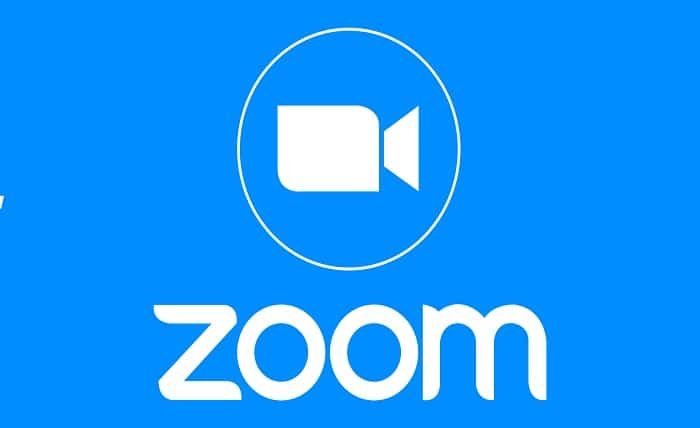The Zoom Logo: Its Design, Significance, and More

In today’s digital age, Zoom has become a household name, particularly for online meetings, webinars, and virtual communication. The company’s logo plays a crucial role in shaping its brand identity. As a recognizable visual symbol, the Zoom logo represents more than just a name; it’s a symbol of connection, communication, and global outreach. In this blog post, we will explore the design, meaning, and significance behind the Zoom logo, along with its evolution over time. We’ll also discuss the importance of a logo in establishing a strong brand presence.
The Zoom logo isn’t just a mere graphic; it tells the story of a company that transformed the way we work, learn, and socialize. Let’s dive deeper into what makes the Zoom logo so impactful.
The Evolution of the Zoom Logo
The journey of the Zoom logo is a testament to the company’s growth and adaptation in the ever-changing tech landscape. Zoom’s initial logo featured a more simplistic design, closely related to its early mission of video conferencing. However, as the company expanded its offerings and gained global prominence, the logo underwent several revisions to reflect the company’s vision and values.
The first iteration of the Zoom logo, introduced in 2011, had a more basic and utilitarian design. It used a standard sans-serif font with the company name, which represented its focus on business communication. Over time, however, Zoom’s visual identity began to evolve, especially during its explosive growth in 2020, when the world transitioned to remote work. During this period, the Zoom logo underwent a few modern tweaks, including the introduction of a new color palette and a more stylized font. These updates helped solidify Zoom’s brand as a dynamic, forward-thinking company.
Today, the Zoom logo is sleek and minimalistic, which aligns with the company’s contemporary, user-friendly interface and messaging. The simplicity of the logo reflects the ease of use and accessibility that Zoom strives to provide for its users.
The Design of the Zoom Logo: Simplicity and Functionality
A key element that defines the Zoom logo is its simplicity. The design prioritizes clarity and recognition, making it instantly recognizable to millions of users worldwide. The Zoom logo is primarily composed of two parts: the logotype and the emblem.
The logotype features the word “Zoom” in a clean, sans-serif typeface, which conveys professionalism and modernity. The font used in the Zoom logo is custom-designed, offering a unique and consistent identity. The letter spacing and proportions of the font are optimized for legibility, ensuring that the name stands out in any context, whether on a website, app, or digital ad.
The emblem, which often accompanies the logotype, incorporates a stylized camera icon. This subtle yet powerful symbol immediately communicates the company’s core focus—video communication. The camera icon is designed in a geometric shape, representing technology, connectivity, and precision. It’s a simple, abstract representation of the video conferencing experience, reinforcing Zoom’s position as the leader in online meetings.
Incorporating these design elements, the Zoom logo reflects the company’s philosophy: to provide seamless, efficient, and intuitive video conferencing solutions.
The Color Palette of the Zoom Logo
Colors are an essential part of any brand’s identity, and the Zoom logo’s color palette plays a significant role in reinforcing its values. The Zoom logo features a combination of blue and white, creating a sense of trust, professionalism, and clarity.
Blue is often associated with qualities such as reliability, calm, and trustworthiness—key attributes for a platform that businesses and educational institutions rely on for virtual communication. The choice of blue in the Zoom logo helps establish a sense of security and dependability, encouraging users to feel confident in the platform’s ability to connect people globally.
White, on the other hand, symbolizes simplicity, clarity, and transparency. The use of white space in the Zoom logo contributes to its minimalistic design, allowing the logo to be versatile and easily scalable across different media and devices.
The combination of blue and white not only makes the logo visually appealing but also aligns with the brand’s message of providing clear, straightforward communication tools for users around the world.
The Symbolism Behind the Zoom Logo
Behind every successful logo is a deep sense of symbolism that resonates with the audience. The Zoom logo, with its carefully selected design elements, encapsulates the company’s values and goals.
The use of the camera icon in the logo is perhaps the most obvious symbol. A camera, especially in the context of video conferencing, represents connection, face-to-face interaction, and communication. In Zoom’s case, it’s a visual metaphor for the virtual bridges the company builds between people, whether for business, education, or socializing.
Furthermore, the choice of a clean and modern font in the Zoom logo symbolizes the company’s focus on innovation and ease of use. As Zoom continues to evolve and add new features to its platform, the logo remains a constant reminder of the company’s mission to make communication simple, effective, and accessible to all.
The simplicity of the Zoom logo, without unnecessary embellishments or intricate details, reflects the company’s commitment to user-friendly technology that prioritizes functionality over complexity.
How the Zoom Logo Reflects the Company’s Global Reach
Zoom’s success is largely due to its ability to reach a global audience. In 2020, the company experienced exponential growth as remote work, virtual learning, and online communication became the norm. The Zoom logo has played an essential role in representing this global expansion, with its minimalist design and universal appeal.
Unlike logos that are tied to specific cultural or geographical contexts, the Zoom logo transcends borders. The clean lines and neutral color palette make it a universally recognizable symbol. Whether someone is using Zoom in the United States, Japan, or Brazil, the logo conveys the same message: a tool for easy, reliable communication.
In this way, the Zoom logo becomes a visual embodiment of the company’s mission to connect people across the world, no matter where they are or what device they’re using. Its design reflects the platform’s ability to break down barriers and create meaningful virtual interactions.
The Importance of a Strong Logo for Brand Identity
A logo is much more than just a graphic; it’s the visual cornerstone of a company’s brand identity. The Zoom logo plays a critical role in establishing the company’s presence in the competitive tech industry. With its clean and modern design, it helps set Zoom apart from other video conferencing platforms.
A strong logo is essential for brand recognition. It’s often the first point of contact a customer has with a company, and it can influence their perception of the business. In Zoom’s case, the logo immediately communicates its focus on communication, technology, and simplicity. Its versatility across various platforms—websites, apps, advertisements, and more—further strengthens the brand’s visibility.
Moreover, a well-designed logo helps build trust with customers. The Zoom logo, with its professional and approachable design, reflects the company’s commitment to providing high-quality, secure video conferencing services. This sense of reliability is essential for a platform that millions of people rely on daily for work, education, and personal communication.
Conclusion
The Zoom logo is much more than just a graphic symbol; it’s a visual representation of the company’s identity, values, and mission. Through its simplicity, modern design, and strategic use of color, the Zoom logo has become a globally recognized emblem of communication and connectivity.
From its evolution over time to the careful thought behind its design elements, the Zoom logo embodies the company’s commitment to providing an easy-to-use, reliable platform for virtual interactions. As Zoom continues to grow and adapt to the needs of its users, the logo will undoubtedly remain an essential part of its brand identity, helping to reinforce its global reach and vision for the future of communication.
FAQs
1. Why is the Zoom logo blue?
The blue color in the Zoom logo symbolizes trust, professionalism, and reliability, which are essential qualities for a platform focused on communication and connectivity.
2. What does the camera symbol in the Zoom logo represent?
The camera symbol represents video communication, which is at the heart of Zoom’s services. It’s a visual metaphor for the connections made through video conferencing.
3. Has the Zoom logo changed over time?
Yes, the Zoom logo has undergone subtle changes over time, including updates to the font and color palette, reflecting the company’s growth and adaptation to the digital landscape.
4. What makes the Zoom logo unique?
The Zoom logo is unique due to its clean, minimalistic design and the combination of a modern typeface with a simple yet effective camera icon, making it universally recognizable.
5. How does the Zoom logo contribute to brand recognition?
The Zoom logo plays a key role in brand recognition by providing a consistent and professional visual identity that helps people instantly identify the platform, whether in ads, on mobile apps, or during video calls.




